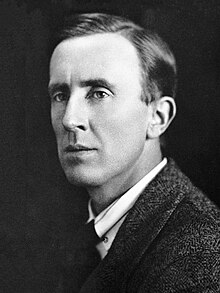
If you are familiar with the writer J. J. R. Tolkien, you may like knowing that the thinking of William Morris, a famous artist (and anarchist) of the late nineteenth century, exercised a significant impact on him. In his reflections on his craft, Morris talked about the notion of a Second World (Tolkien discussed this, too). This is a world apart from present reality, a world completely unto itself, a self-contained world with its own laws, beliefs, and reality: a world of fantasy. Tolkien's famous Lord of the Rings trilogy is a case in point. Those familiar with this remarkable work know that Tolkien presents its events in a world that he has created and which has no connection to the world the rest of us occupy. It's a fantasy world.
Although we could make all kinds of parallels with other things with this, I mention it in relation to, predictably, the supernatural. Part of the reason some of us have trouble grasping or accepting the supernatural is that it appears to function in a way that seems at odds with the world to which we are accustomed. It does not always evidence a credible connection to what we currently know. The perfunctory response to this is of course, "Well, one must have faith."
No comments:
Post a Comment